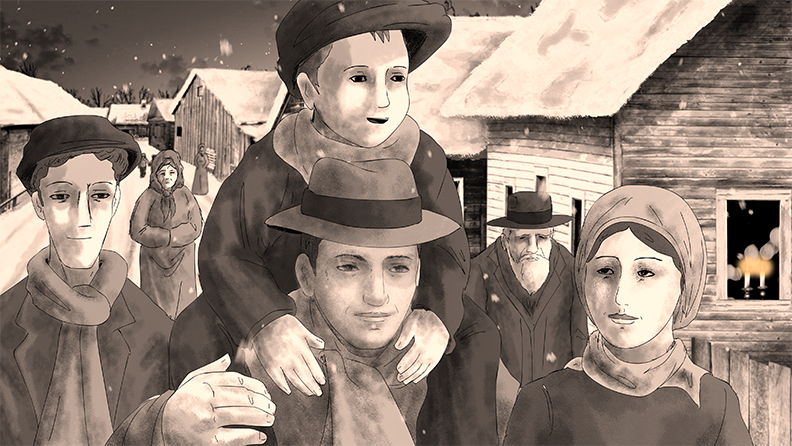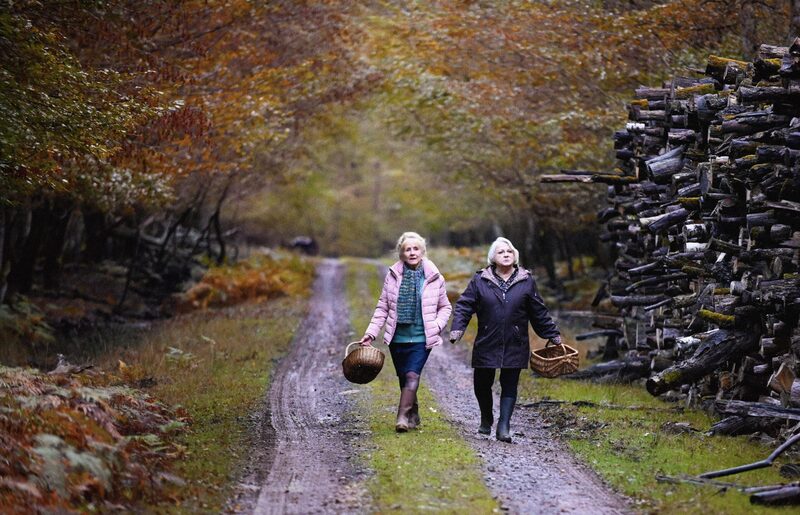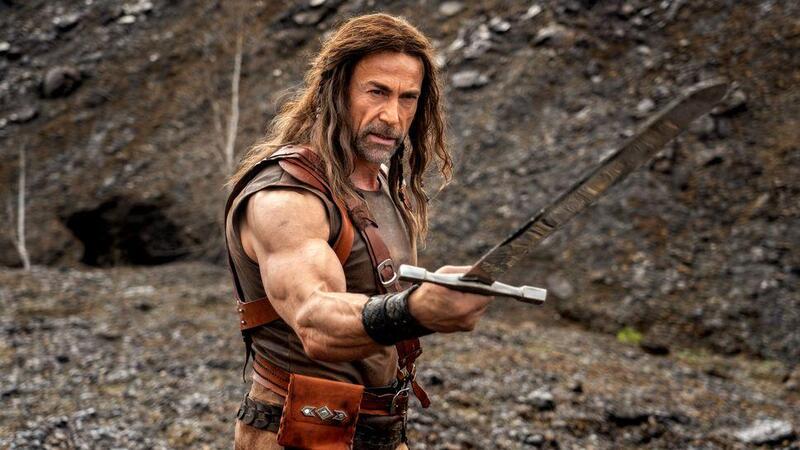
When Witnesses Speak, History Stops Whispering
MOVIE REVIEW
Among Neighbors
–
Genre: Documentary, History, Animation
Year Released: 2025
Runtime: 1h 40m
Director(s): Yoav Potash
Where to Watch: opens October 10, 2025, in New York City and October 17 in Los Angeles
RAVING REVIEW: There’s a difference between describing the past and confronting it. AMONG NEIGHBORS traces one town’s suppressed history with a patient, unflinching gaze. Yoav Potash constructs the film from voices that are vanishing and artifacts that have been literally unearthed, shaping a moral inquiry that never loses sight of individual lives. The story is simple: elders from the Polish town of Gniewoszów share memories of Jewish neighbors whose presence has been erased from the streets, cemeteries, and official narratives. Yet, as the conversations deepen, so does the film’s focus, circling the murders that occurred after the war ended and the ramifications of telling the truth in the present day.
What makes the approach effective is how carefully it turns absence into presence. Animated sequences don’t function as flashy reenactments; they’re bridges across the gaps of memory, translating a witness’s thoughts into shapes, gestures, and spaces we can grasp. The style is restrained—soft lines, muted movement—so the technique feels like an extension of testimony rather than a distraction from it. That restraint matters because the interviews themselves have weight. When Pelagia Radecka describes what she saw and why she kept quiet, the film understands that a single pause can say more than an entire page of exposition. When Yaacov Goldstein traces a life that bent but didn’t break, the animation gently fills in what the camera cannot capture.
The documentary’s most compelling moments examine how competing loyalties—family, faith, nation—can twist collective memory. Potash meets officials and intellectuals who frame the past through patriotism, then places those voices alongside witnesses who insist on specificity over slogans. This juxtaposition is crucial. The film avoids caricature even when conversations turn combative, allowing arguments to unfold long enough for us to feel the friction between experience and state-sanctioned narrative. The result is a portrait of a community at the fault line of history: some residents opting for reckoning, while others cling to comforting myths.
The editorial structure keeps returning to concrete objects—tombstones stolen and repurposed, a cemetery's rededication, and the artifacts of day-to-day Jewish life—as if rethreading a needle through fabric that has been torn apart. The images are quiet but accusatory; they remind us that erasure is not metaphorical here. The sound design allows for silence without letting the track fade off. Ambient textures—wind across an open field, the scrape of stone, the breath between a question and an answer—create a fragile intimacy that suits a film about what people dared not say aloud.
The film’s strongest theme—true patriotism means facing hard truths—emerges without preaching. By focusing on a town rather than attempting a totalizing national history, the documentary avoids overreach and stays grounded in lived experience. That scale allows the film to explore a moving subplot: the search for a boy who survived, the enduring tenderness of affection, and the ache of not knowing how a story ended.
The film succeeds at something rare: it honors witnesses while acknowledging the complexity of their memories. It has no interest in flattening the past into heroes and villains; instead, it allows the contradictions to breathe. Recollections of neighbors coexist with accounts of complicity. Personal affection sits beside denial. The camera doesn’t punish; it listens, and then it asks harder questions. That ethical stance is the spine of the film, and it’s why the material lingers.
The presence of figures like Rabbi Michael Schudrich, Magda Teter, and Konstanty Gebert adds context without overpowering the townspeople at the story’s center. Their insights sketch the wider implications of what’s being said in kitchens and graveyards, linking one town’s reckoning to a broader struggle over control. Shots of investigators and historians working with care and ritual remind us that stewardship of memory is both scholarly and spiritual work.
The animation teams deserve special praise. Their sequences never sensationalize violence; they render it with the tact of a remembered gesture: a doorway, a glance, a sudden stillness. That choice protects the dignity of the subjects while making the reality impossible to ignore. It’s also a way to address the scarcity or fragility of archival material: the absence becomes a formal challenge answered with creativity.
The film is an act of reclamation—of names, of stories that risked being rewritten or forgotten. It’s also a reminder that the politics of memory are not abstract. Laws and culture create environments where silence feels safer than speaking the truth; the documentary shows what it takes to speak up anyway. Memory rarely ties itself up with a bow. What matters is the courage to tell the story and to keep telling it, especially when it’s inconvenient.
AMONG NEIGHBORS earns its place as a vital, deeply felt contribution to contemporary Holocaust documentary filmmaking. It is rigorous without being dry, empathetic without being sentimental, and inventive in ways that serve the testimonies rather than overshadow them. The film leaves you with questions that matter and images you won’t shake.
Please visit https://linktr.ee/overlyhonestr for more reviews.
You can follow me on Letterboxd, Instagram, Twitter, and YouTube. My social media accounts can also be found on most platforms by searching for 'Overly Honest Reviews'.
I’m always happy to hear from my readers; please don't hesitate to say hello or send me any questions about movies.
[photo courtesy of HEADFIRST ARTS & MEDIA, 8 ABOVE, PANORAMA FILMS]
DISCLAIMER:
At Overly Honest Movie Reviews, we value honesty and transparency. Occasionally, we receive complimentary items for review, including DVDs, Blu-rays, CDs, Vinyl Records, Books, and more. We assure you that these arrangements do not influence our reviews, as we are committed to providing unbiased and sincere evaluations. We aim to help you make informed entertainment choices regardless of our relationship with distributors or producers.
Amazon Affiliate Links:
Additionally, this site contains Amazon affiliate links. If you purchase through these links, we may receive a commission. This affiliate arrangement does not affect our commitment to honest reviews and helps support our site. We appreciate your trust and support in navigating these links.



Average Rating